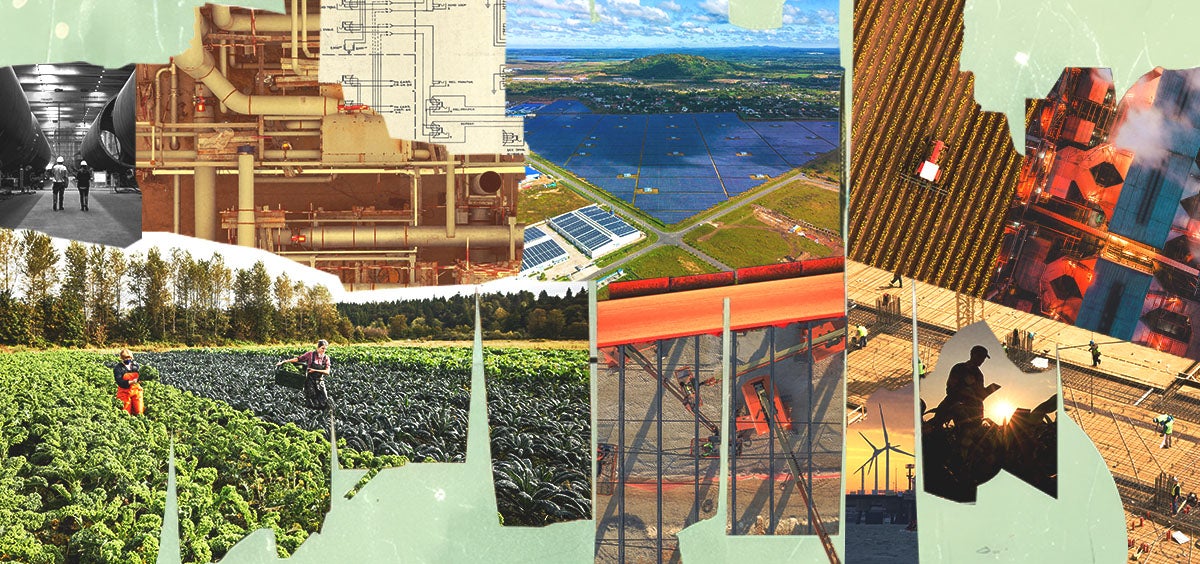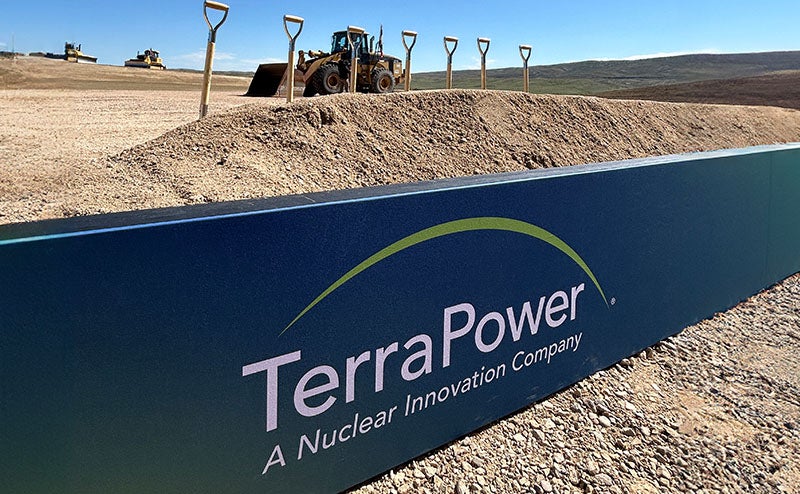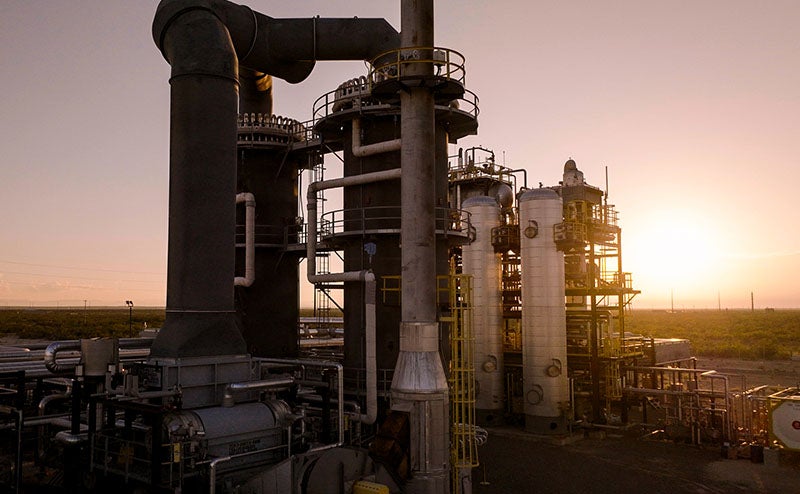The idea of switching to lab-made fats and oils may seem strange at first. But their potential to significantly reduce our carbon footprint is immense.
Open the newspaper, turn on the TV, or go online, and you’ll find alarming headlines about raging wildfires, devastating storms, and severe droughts. Climate change is staring us in the face, and the evidence is everywhere. What's harder to see, unless you know where to look, is growing evidence that we're making real progress in the fight against it. That's why I'm so excited to be in London this week for the Breakthrough Energy Summit. Here, this progress is on full display, and we’re bringing together global leaders, industry executives, innovators, and investors to accelerate it.
When we launched Breakthrough Energy back in 2015, the Paris Agreement had just been adopted. Nearly every country on earth committed to ambitious emissions cuts in the fight against climate change. But it was clear that meeting these goals would require unprecedented investment from the private sector to drive innovation. It would also require extraordinary collaboration across all sectors to get clean energy ideas out of the lab and into the market affordably and at scale. This work has been Breakthrough Energy's mission from day one.
At the first BE Summit in 2022, I shared updates on the cutting-edge concepts and companies we’re supporting that address the five grand challenges—manufacturing, electricity, agriculture, transportation, and buildings—behind most of the planet’s greenhouse gas emissions. This year, in London, we have much more to share: a portfolio of climate technologies that aren't just theoretical or promising anymore, but proven and ready for the market today.
That's what makes this summit so momentous. In less than a decade, investment has helped turn pipe dreams into a pipeline of transformative solutions. Now, it’s time to invest so those solutions can scale up, deploy, and slash emissions in every sector of the economy.
Manufacturing – 29% of global emissions
Manufacturing—how we make almost everything—is one of the hardest sources of emissions to cut. While the challenges here are complex, the pace of progress has been incredible, and faster than what I hoped when I started Breakthrough, especially in cement and steel, which each contribute around 10 percent of all global emissions. CarbonCure has pioneered a way to inject waste carbon into fresh concrete, the end product cement is used for—making the second-most consumed material on earth much greener. Their retrofits of existing facilities, deployed at over 800 locations worldwide, have prevented nearly half a million tons of CO2 from entering the atmosphere.
Meanwhile, Ecocem’s ACT technology for low-carbon cement was recently approved for full commercial use across Europe—while another of its low-carbon concrete solutions was used in construction for the Athletes’ Village at the upcoming Summer Olympics in Paris. And Boston Metal has nailed the production of “green” steel without coal at scale, and now has a facility up and running in Brazil.
Electricity – 29% of global emissions
Most experts agree that the world’s electricity needs will triple by 2050. And when it comes to climate change, electrification is a key part of the solution. But only if the electricity is green; otherwise, we’re just swapping one source of emissions for another. Until recently, we haven’t had good options for storing electricity at scale, which made it hard to get the most out of intermittent renewable energy sources like wind and solar. Now, Form Energy’s affordable batteries can store this energy for multiple days and make it more reliable. Their West Virginia factory, which is nearing completion, is bringing over 750 jobs to a town whose tin mill recently closed. And TS Conductor’s advanced power lines, already commercially deployed, can double the amount of transmittable power and help maximize our current grid’s efficiency.
Agriculture – 20% of global emissions
What we grow and eat has a huge impact on the climate. But Pivot Bio is lessening that impact with microbial products that allow crops to draw nitrogen from the air, giving farmers something they’ve wanted for a long time: a more reliable and efficient form of fertilizer. Their solutions—which produce less than one percent of the emissions of synthetic fertilizers and need 1,000 times less water—are already being used across five million acres of land to help farmers improve productivity while eliminating emissions. And Rumin8, whose feed supplements have successfully reduced livestock methane emissions by over 90 percent while boosting productivity, demonstrates that we can enjoy beef and dairy without the high environmental costs they're typically associated with. They recently opened a demonstration plant in Australia to showcase the commercial viability of their products.
Transportation – 15% of global emissions
Electric vehicles are the future, but their batteries are made of resources that are both limited and difficult to source responsibly. One solution is recycling—and Redwood Materials has figured out a better way to do it. At their facility in Nevada, the metals found in recycled batteries are refined and then reused in new batteries, all while emitting 40 to 70 percent less than other recycling processes. But recycling alone won’t be enough to meet the growing demand for EVs and electrification more broadly. New supplies will be needed—something KoBold Metals has cracked the code on. They’re using AI to more reliably find minerals and metals that will undergird the energy transition, most recently copper in Zambia.
Long-distance and heavy-duty transportation still have significant technical hurdles to overcome, but there’s impressive progress being made, particularly in aviation and shipping. ZeroAvia, for instance, is developing hydrogen-electric aircraft engines with operations in the U.K. and U.S., and their prototype engines are successfully flying aircraft in early trials.
Buildings – 7% of global emissions
Ensuring that buildings are warm in the winter and cool in the summer takes a lot of energy—and much of it gets wasted by single-pane windows and leaky ducts that let heat and AC slip out. But there are new options to help fix these issues. LuxWall has created ultra-insulating window glass that is so efficient, it performs like a wall you can see through. After years of R&D, their windows are rolling off the production line at their first commercial factory in Michigan; once installed, the windows will cut both costs and emissions. Then there’s Aeroseal, whose innovative polymer technology finds and plugs air leaks in a building’s envelope and ducts and is already commercially deployed.
Carbon Management
To limit global warming, though, it’s not enough to stop emitting greenhouse gases going forward. We also need to manage what’s already been emitted. In Arkansas, Graphyte is turning plant waste into carbon-trapping bricks and burying them underground; if they sequester 50,000 tons of carbon by 2025 as planned, it will be the largest carbon removal project in the world. In California, Heirloom Carbon’s first-in-the-nation commercial Direct Air Capture facility uses limestone forty feet high to absorb carbon from the air like a sponge. The pilot facility is removing 1,000 tons a year already, and they have plans to scale rapidly.
These are just a few of the more than 100 BE-backed companies that are gathered in London this week to showcase their solutions—all addressing the grand challenges, all ready to work, and all proof that the Clean Industrial Revolution is here. (For more on the progress we’ve made and what’s still left to do, see BE’s latest State of the Transition report.)
Now we need to supercharge our support and ramp up our investments. With commitments and capital from governments and industry leaders, we can deploy these solutions and get them to scale. We can drive down the stubborn green premiums that make a lot of clean technologies more expensive than their dirty counterparts (and too expensive for widespread adoption). We can keep the innovation pipeline flowing. We can get much closer to an abundant, affordable, clean energy future.
Thanks to brilliant minds, big ideas, and bold investments, transformative climate tech has arrived. It's here in London. The Breakthrough Energy Summit is where the momentum that’s been building since 2015 meets the marketplace. I can’t wait to talk to everyone here about where we go next. And I’m eager to see how the connections, partnerships, and investments forged over the next few days help this climate tech reach everyone—and help us reach net zero.




